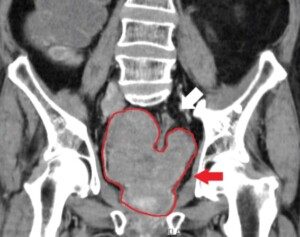Are you between 45 and 65 and worry too much about Alzheimer’s, especially since you know that people under 65 can get it?
Exercise is a powerful tool in reducing the risk of this form of dementia.
A study has found that increasing physical activity between 45 and 65 may help lower the risk of developing Alzheimer’s disease.
The study also concludes that a sedentary lifestyle can harm the brain.
The paper was published in Alzheimer’s & Dementia (2025).
The research was carried out by the Barcelona Institute for Global Health and the Barcelonaβeta Brain Research Center.
Avoiding a regular exercise routine is linked to around 13% of Alzheimer’s cases globally.
The World Health Organization recommends adults do 150 to 300 minutes of moderate exercise, or 75 to 150 minutes of intense activity – week after week.
How the Study Was Done
The study, led by ISGlobal researcher Eider Arenaza-Urquijo, involved 337 middle-age participants from Catalonia who were part of the ALFA+ project.
All had a family history of Alzheimer’s and were followed over four years.
The researchers used questionnaires to measure changes in physical activity and used brain scans to examine how exercise influenced brain structure and function.
Participants were divided into three categories:
- Those who met the WHO’s activity recommendations
- Subjects who did some activity but not enough to meet the guidelines
- People who were completely inactive
One key focus was on beta-amyloid, a protein that builds up in the brain and disrupts neural communication.
This buildup is one of the earliest signs linked to Alzheimer’s.
Results of the Study
People who increased their activity to reach the WHO’s recommended levels had lower amounts of beta-amyloid in their brains.
The more their activity levels increased, the greater the drop in this protein — suggesting a clear connection between exercise and a reduction in harmful changes to the brain.
The researchers also found that participants who were not completely inactive had more thickness in certain brain areas that are often affected early in Alzheimer’s.
Cortical thickness, especially in the medial temporal region, is important for memory.
Thinning in these areas can be an early signal of neurodegeneration.
Even participants who didn’t fully meet the activity targets still had more cortical thickness than those who did no physical activity at all.
These findings are powerful indicators of just how effective exercise – and more of it – is at preserving normal brain function and helping to avoid brain changes that lead to Alzheimer’s.
What about increasing the amount of exercise?
The study didn’t just look at whether people met exercise targets — it also tracked increases in activity.
The researchers noticed that the benefits were more strongly linked to increases in physical activity over time, not just whether someone reached a fixed goal.
How to Increase Your Weekly Exercise Time
Get a treadmill desk for your home and do as much computer work as possible while walking very slowly.
Stand more at the workplace if possible; every chance you get, walk around, such as when you’re on the phone or looking over some reports.
Take the dog on longer walks.
Take a 30 minute brisk walk before dinner.
Abandon happy hour at the bar after work and instead head to a gym or yoga studio.
Buy portable exercise equipment and spend 20 minutes using it every morning before you begin your day. This could be tension bands, a kettlebell or a pair of dumbbells.
Buy a stationary bike for that spare room in the house.
Take up inline skating, hiking or martial arts.
Take fitness classes.
Join a climbing gym.
Join a hiking group.
Some Extra Advice from a Former Personal Trainer
Don’t wait until you lose weight or quit smoking to implement any of the aforementioned guidelines for increasing your weekly exercise time.
It’s never too soon to put a plan into action to help ward off Alzheimer’s disease.
Buy that pair of dumbbells from the thrift shop that you noticed last time you were there, and get moving!
 Lorra Garrick is a former personal trainer certified by the American Council on Exercise. At Bally Total Fitness, where she was also a group fitness instructor, she trained clients of all ages and abilities for fat loss and maintaining it, muscle and strength building, fitness, and improved cardiovascular and overall health.
Lorra Garrick is a former personal trainer certified by the American Council on Exercise. At Bally Total Fitness, where she was also a group fitness instructor, she trained clients of all ages and abilities for fat loss and maintaining it, muscle and strength building, fitness, and improved cardiovascular and overall health.
.










































